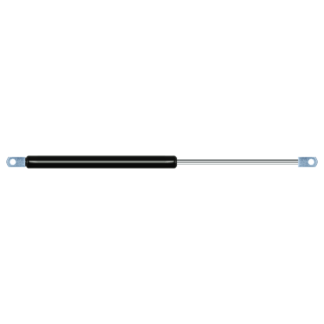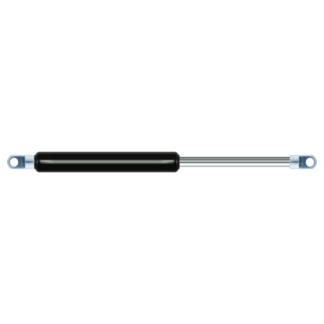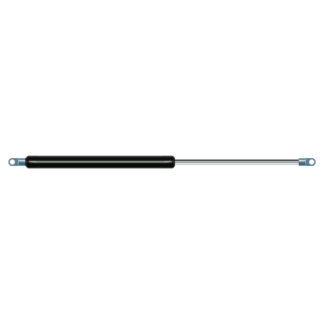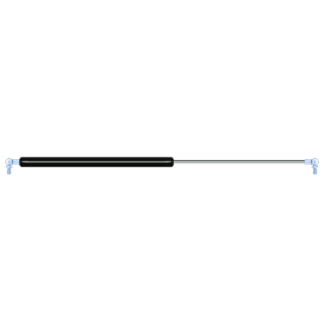Gas struts play a crucial role in the smooth functioning of various mechanisms, from automotive applications to furniture and industrial machinery. Whether you’re a seasoned professional or a DIY enthusiast, mastering the art of fitting gas struts is essential for ensuring optimal performance and longevity of your equipment. In this comprehensive guide, you will learn how to fit gas struts. We will help you achieve perfect installations every time.
Understanding gas struts: a brief overview
Before delving into the nitty-gritty of fitting gas struts, it’s essential to understand what they are and how they work. Gas struts, also known as gas springs, are hydraulic devices designed to provide controlled motion and damping in various applications. They consist of a piston rod enclosed in a cylinder filled with compressed gas and hydraulic fluid. When pressure is applied to the piston rod, the gas compresses, exerting force to move the rod in or out of the cylinder.
How to select the right gas struts for your application
We would like to simplify the often complex process of ordering new gas struts. We assure a seamless shopping experience with the help of our online tools, designed to assist you in choosing the best option to fit your specific task.
-
- Calculator tool
How to find the gas strut you need? Determining the correct size and strength can be challenging. This is where our calculator tool comes in. Simply input parameters such as length, width, weight, pivot point, angles, and more, and the tool will guide you, recommending the best gas struts to fit your needs. - Replacement tool
Over time, your once-efficient gas strut may lose its effectiveness. For situations where safety is crucial, prompt gas spring replacement is essential. Our replacement tool simplifies this process, helping you quickly identify equivalent replacements for popular gas strut brands. How to do this? Enter the product number, select the recommended product, verify, and order with ease. Begin your search for the ideal gas struts to fit your application with our replacement tool. - Configurator tool
For those who enjoy customization, the configurator tool is the best solution. Its interactive platform allows you to choose materials, switch between measurement units, and select mounting options and gas strut types. You can even preview a 3D model. Afterward, specify the necessary force in Newtons (calculated via the calculator tool). Once completed, add your custom gas strut to your cart and proceed to checkout.
- Calculator tool
Preparing for fitting gas struts: tools and equipment
Before diving into the fitting process, it’s essential to gather all the necessary tools and equipment. You’ll need a wrench or socket set, a drill with appropriate bits, measuring tape, mounting brackets or hardware, and safety equipment such as gloves and goggles. Make sure to work in a well-ventilated area and follow all safety precautions outlined in the manufacturer’s instructions when you fit the gas struts.
Step-by-step installation guide: how to fit your gas struts
- Measure and mark mounting points
Start by carefully measuring and marking the mounting points for the gas struts on your equipment or surface. Use a measuring tape and pencil to ensure accuracy, and double-check your measurements before proceeding to the next step in the fitting process. - Drill mounting holes
Once you’ve marked the mounting points, use a drill with the appropriate bit size to drill holes for the mounting brackets or hardware. Take care to drill straight and perpendicular to the surface to ensure a secure fit. - Attach mounting brackets
Next, attach the mounting brackets or hardware to the surface using screws or bolts. Ensure that the brackets are securely fastened and aligned with the mounting holes. - Install gas struts
With the mounting brackets in place, it’s time to install the gas struts. Carefully position the struts on the mounting brackets and secure them in place using the provided hardware. Make sure that the struts are oriented correctly and aligned with the intended direction of motion. - Test and adjust
Once the gas struts are installed, test the mechanism to ensure smooth operation and proper alignment. If necessary, make any adjustments to the mounting brackets or positioning of the struts to achieve optimal performance.
Maintenance and troubleshooting tips
To maintain optimal performance of your gas struts after fitting them, it’s essential to perform regular inspections and maintenance tasks. Inspect the struts for signs of wear or damage, such as leaks or corrosion, and replace them as needed. Keep the struts clean and free from debris, and lubricate moving parts as recommended by the manufacturer.
If you encounter any issues or difficulties during the installation process, don’t hesitate to consult the manufacturer’s instructions or seek assistance from a professional. Remember that proper installation and maintenance are key to ensuring the longevity and performance of your gas struts.
Order online at Gasspringsshop: the number 1 in the UK
Mastering the art of fitting gas struts is essential for ensuring optimal performance and longevity of your equipment. By following the step-by-step guide outlined above and paying attention to the details of installation and maintenance, you can achieve perfect installations every time. Order your gas struts at Gasspringsshop UK! Any questions? Our support team is always ready to explain more about how it works to fit our gas struts. Contact us via email at [email protected] or call us at +44(0)24 7645 5580.






